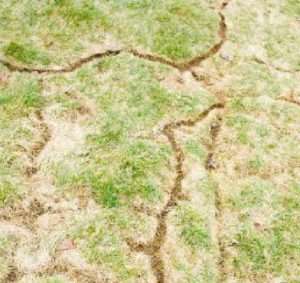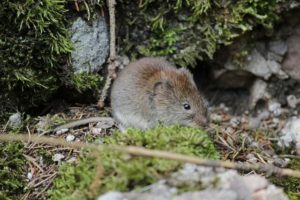Understanding Vole Yard Damage and How to Combat It
Letting Loose the Power of Vole Parasite Control: Advanced Techniques for Infestation Removal and Treatment
As the perseverance of vole problems proceeds to challenge building owners and farming specialists alike, the quest for extra efficient and efficient parasite control techniques intensifies. By checking out sophisticated capturing methods, tactical exclusion approaches, environmentally friendly repellents, and integrated insect monitoring solutions, an encouraging horizon arises in the fight versus vole infestations.
Vole Insect Identification and Evaluation
Voles, small rats that resemble mice yet have shorter tails, are frequently recognized pests in gardens and yards, calling for comprehensive analysis to figure out the extent of their invasion. Recognizing voles includes recognizing their distinct attributes, such as their stocky bodies, short legs, and small eyes. They are usually around 3 to 9 inches long and can differ in shade from grey to brown.
Examining vole invasions is vital for carrying out efficient bug control strategies. Signs of vole presence consist of paths in grassy locations, damaged greenery, and tiny burrow openings near the surface area. By evaluating these indicators, homeowner can determine the intensity of the problem and create appropriate eradication methods.

Cutting-Edge Capturing Strategies
Reliable vole parasite control necessitates staying abreast of the most recent developments in trapping methods to successfully handle infestations in gardens and yards. One sophisticated approach is the usage of live traps that capture voles without causing harm, permitting for their safe removal and release in an appropriate habitat away from residential areas.
An additional innovative trapping strategy involves making use of electronic traps that deliver a fast and humane electrical shock to remove voles quickly. These catches are created to be safe for use around animals and youngsters while supplying a highly reliable technique of vole control. Furthermore, some electronic traps are equipped with sensors and remote monitoring capabilities, allowing home owners to track vole activity and trap condition from a distance, improving the overall effectiveness of vole insect control initiatives. By including these cutting-edge capturing techniques into bug management approaches, home owners can take on vole invasions with precision and compassion.

Strategic Exemption Techniques
Implementing tactical exclusion methods is necessary in avoiding vole infestations and shielding yards and lawns from damages caused by these insects. These obstacles need to be buried at the very least 12 inches deep and rise 6 inches above the ground to stop voles from burrowing underneath or climbing up over them.
Another vital exemption method is the usage of crushed rock or rock compost as opposed to natural compost. Voles are less likely to passage via rocky surface, making this a much less eye-catching setting for them. Regularly evaluating the perimeter of the garden or lawn for spaces in foundations, fences, or wall surfaces is crucial. These access points need to be secured with products like concrete or steel blinking to stop vole gain access to.
Eco-Friendly Repellents and Deterrents
Using eco pleasant repellents and deterrents is a lasting strategy to handling vole populations and decreasing damages to yards and backyards. Green options are getting popularity as a result of their performance in fending off voles without creating harm to the setting, family pets, or valuable wildlife. One common green method is making use of natural vole repellents such as castor oil, garlic, or killer pee, which develop unpleasant aromas for voles, driving them far from dealt with locations.
One more environmentally friendly deterrent is the use of physical obstacles like wire mesh or equipment cloth to secure prone plants and bulbs from vole damage. These read what he said barriers serve as a preventive action against vole intrusion while allowing for appropriate aeration and drain in the dirt.
Additionally, introducing vole killers like owls or installing nest boxes can help normally control vole populations in a garden or backyard. By urging natural killers, a well balanced community can be kept without the demand for dangerous chemicals or traps. Generally, incorporating environment-friendly repellents and deterrents in vole parasite control methods advertises lasting and environmentally conscious practices.
Integrated Pest Management Solutions
An all natural method to managing vole populations and mitigating damage in gardens and yards includes the extensive method of Integrated Bug Monitoring Solutions. Integrated Bug Administration (IPM) incorporates different strategies to address vole infestations effectively while lessening ecological effect. This method integrates biological, cultural, physical, and chemical control methods to attain long-lasting pest control.
One secret facet of IPM is the focus on avoidance. By executing measures such as habitat modification, exemption methods, and preserving proper yard hygiene, property owners can create atmospheres less helpful to vole habitation. Furthermore, organic controls, such as introducing all-natural predators or utilizing vole-resistant plant varieties, can help manage vole populaces without turning to chemical interventions.
When chemical control becomes needed, IPM focuses on utilizing targeted and environmentally pleasant pesticides in an read more exact manner. This decreases the overall chemical lots on the environment while effectively handling vole populaces. Regular surveillance and assessment are also necessary components of IPM, permitting changes to techniques based upon pest populace dynamics and effectiveness of control actions. By adopting Integrated Bug Management Solutions, house owners can attain sustainable vole insect control while advertising ecological community health in their backyards and gardens.
Conclusion
To a fantastic read conclude, the innovative methods for vole bug control discussed in this short article supply efficient options for invasion elimination and therapy. By applying a mix of capturing, exemption, repellents, and integrated insect administration techniques, homeowner can effectively handle vole populations and prevent further damages. It is critical to effectively examine and determine vole insects, and use environment-friendly techniques to deal with infestations in a lasting fashion - vole control utah. These approaches supply a detailed method to vole pest control for lasting success.
As the perseverance of vole problems continues to test home owners and farming professionals alike, the quest for more reliable and efficient bug control methods escalates. Additionally, some digital catches are geared up with sensors and remote tracking capacities, allowing home owners to track vole activity and trap standing from a distance, boosting the overall efficiency of vole parasite control efforts. One typical eco-friendly technique is making use of all-natural vole repellents such as castor oil, garlic, or predator pee, which develop undesirable scents for voles, driving them away from treated locations.
Additionally, introducing vole killers like owls or mounting nest boxes can help naturally control vole populations in a yard or backyard. By adopting Integrated Insect Monitoring Solutions, homeowners can accomplish sustainable vole bug control while advertising ecosystem health and wellness in their lawns and gardens.